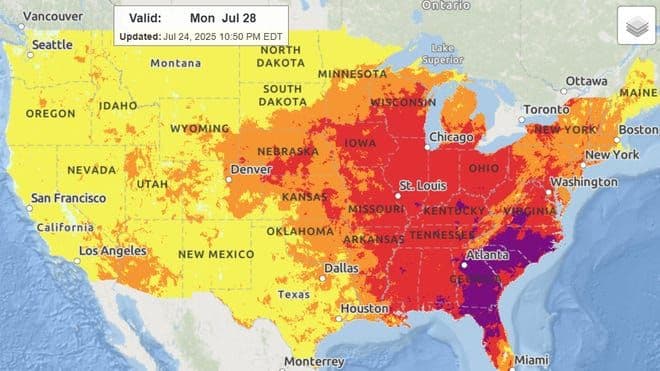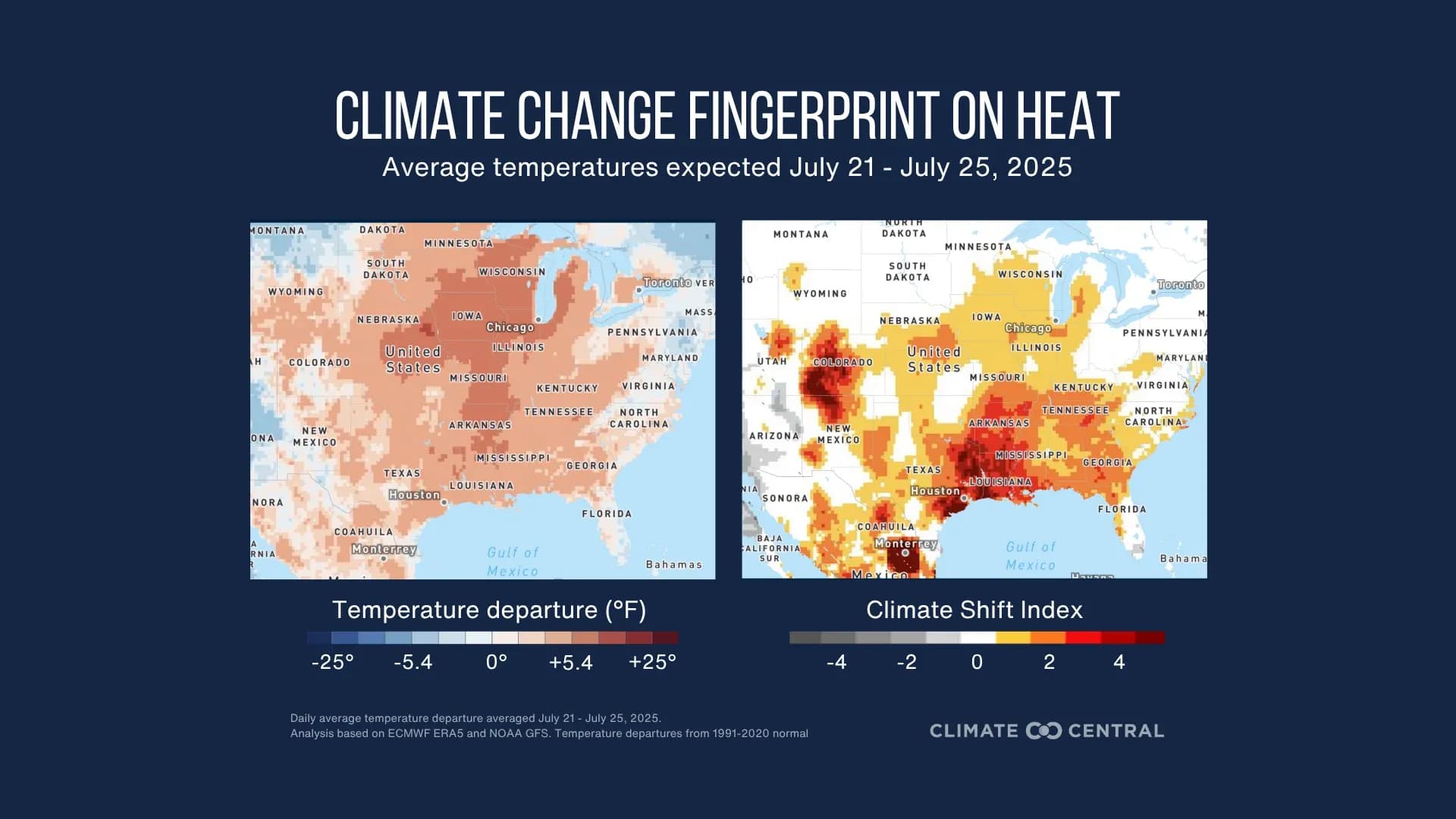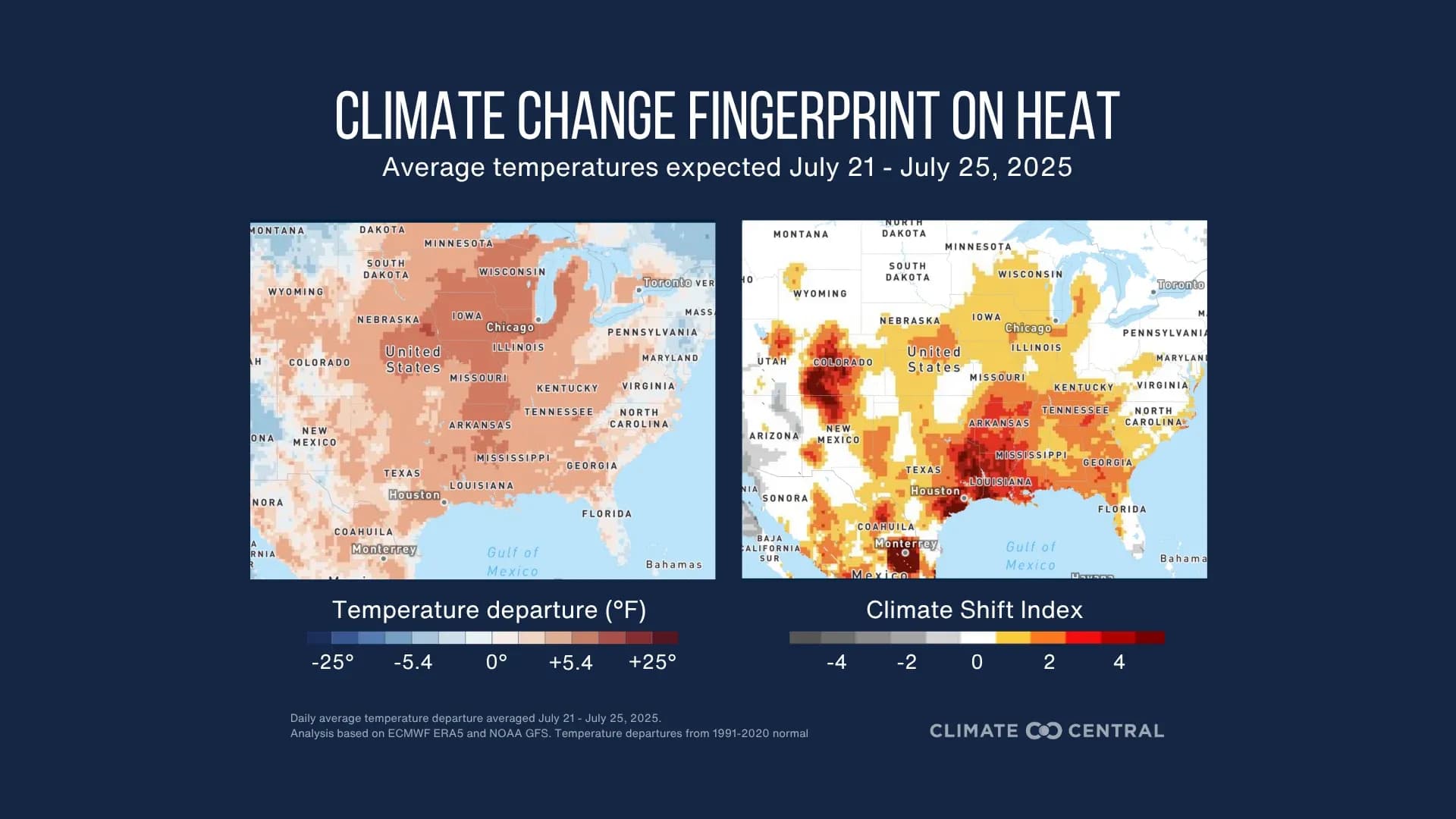The Invisible Shift: When Summer's Embrace Becomes a Harsh Grip
Explore how climate change redefines summer's heat, turning 'normal' into unprecedented. Unpack the science of unnatural weather events and their broader implications.

When 'Normal' No Longer Applies
The dog days of summer have always brought heat, but what the United States experienced from July 21-25, 2025, was a stark departure from the familiar. A prolonged stretch of intense heat and oppressive humidity, initially gripping the Southeast and then expanding into the mid-South and Midwest, wasn't just a typical summer scorcher. A groundbreaking analysis by revealed that human-caused climate change made this excessive heat at least three times more likely for nearly 160 million people—almost half the U.S. population. As , president and CEO of the , succinctly put it, "We've always had heat waves... But it's happening a lot more, with greater intensity, greater duration and greater frequency." This isn't your grandmother's July; it’s a new meteorological reality, signaling an undeniable shift in what we once considered 'normal' weather patterns, demanding a fresh perspective on seasonal expectations and public safety.
The Science of 'Unnatural' Heat Unveiled
The profound statement, "This is not your grandmother’s heat wave," echoed by , VP of Science at , isn't hyperbole; it's a conclusion rooted in advanced attribution science. Tools like the are now quantifying humanity's fingerprint on extreme weather. During the July 2025 event, CSI levels soared to 5—the highest possible—across vast regions from to , indicating that human-caused climate change made this extreme heat at least five times more likely. For nearly 160 million Americans, at least one day reached a CSI of 3 or higher, signaling a strong climate influence. This scientific unveiling moves beyond mere observation, providing concrete data that distinguishes naturally occurring heat from events significantly amplified by a warmer planet. As noted, "As the earth gets warmer, we see more extremes and it's the extremes that get us. They kill us. They make us sick." This is the precise, quantifiable difference of an 'unnatural' heat event.
Beyond the Thermometer: Connected Extremes
While soaring temperatures are the most immediate and visceral symptom of our shifting climate, the picture of extreme weather is far more complex and interconnected than just a rising thermometer. highlighted that heat, though obvious, isn't the sole player. Droughts and extreme rainfall events, like the deadly flash flooding in on July 4, are also intensifying. Intriguingly, these extremes often coexist or interact within the same atmospheric systems; forecasts for the July 2025 heat wave showed record-breaking temperatures under the high-pressure area, while intense rainfall and thunderstorms were predicted around its perimeter. This dynamic interplay underscores a critical point: climate change isn't just making individual weather events more severe; it's creating a cascade of amplified and sometimes concurrent phenomena. From urban heat islands, where city infrastructure traps heat, to the broader atmospheric dynamics, these linked extremes paint a comprehensive and concerning portrait of our altered climate.
Communicating Climate's Grip: Beyond the Forecast
Effectively communicating the profound shift in our weather patterns, particularly the human influence behind them, presents a unique challenge that extends far beyond traditional meteorological forecasts. Resources like the 's reporting guide and 's 'Guide to Reporting on Unnatural Disasters' highlight the necessity of integrating attribution science into public discourse. However, this crucial communication faces significant hurdles. Past administrations, for instance, have actively sought to curb what they termed 'climate alarmism,' altering official language, removing climate topics from government websites like the 's homepage, and even ceasing maintenance of vital public health tools such as the 's heat risk tracker. Furthermore, reports indicate the termination of hundreds of grants referencing climate change, including those specifically focused on heat. This suppression of information and research impedes public understanding and adaptation, making it harder for communities and individuals to grasp the true nature of the 'unnatural' disasters they increasingly face.
A Future Defined by Shifted Summers
The trends are undeniable and point towards a future where 'shifted summers' are the new norm. June 2025 marked the seventh hottest June on record, and the first two weeks of July 2025 saw average U.S. temperatures 1.5 degrees warmer than the most recent 30-year normal. Looking back further, average July temperatures have climbed roughly 2.7 degrees since 1950. To put this in perspective, a 2.7-degree increase in human body temperature would equate to a fever of 101.3 degrees—a clear sign of distress. Critically, average overnight temperatures are rising even faster than daytime highs, preventing the land, trees, and buildings from cooling down, leading to quicker heat accumulation the following day. This lack of nocturnal relief intensifies the danger and duration of heat waves. As warned, these increasingly intense, frequent, and prolonged extremes are what truly harm us. This isn't just about hotter days; it's about a fundamental redefinition of summer, demanding proactive strategies to adapt to a future shaped by these profound climate shifts.
Related Articles

Unpacking Summer's Fiery Future: How Climate Change Rewrites the Rules of Heat

Unpacking Summer's Fiery Future: How Climate Change Rewrites the Rules of Heat

The Enduring Burn: Unmasking Climate's Mark on America's Hottest Days

The Enduring Burn: Unmasking Climate's Mark on America's Hottest Days

The Climate Crucible: Unpacking the New Era of Extreme Summer Heat

The Climate Crucible: Unpacking the New Era of Extreme Summer Heat

Beyond the Thermometer: Unpacking Our New Era of Extreme Heat
